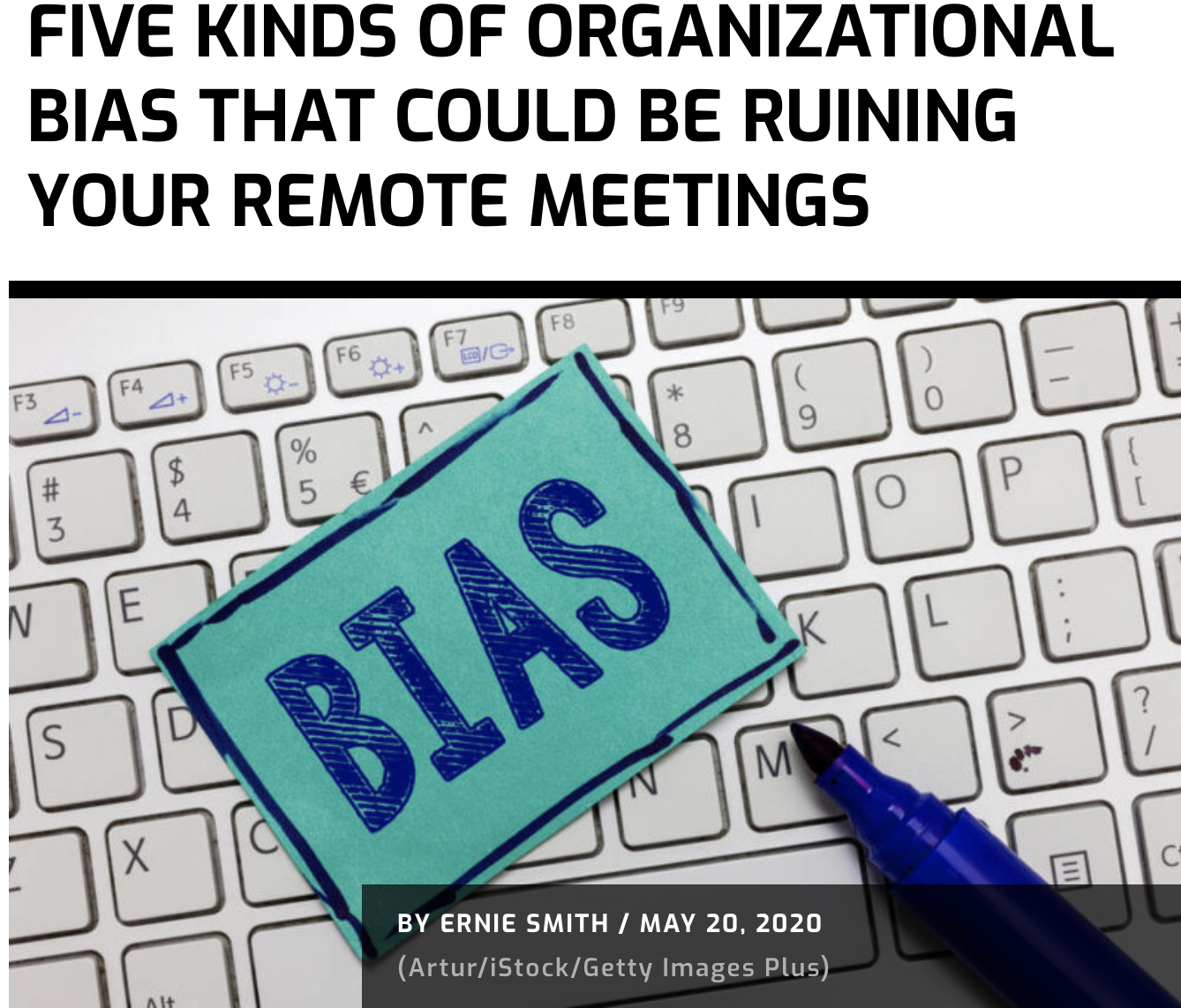
Excellent article regarding kinds of organizational bias by Ernie Smith in Associations Now.
Leaders should keep a close eye on the subtle ways that they—or their employees—might be introducing biases to the way they approach remote calls.
Lots of different behaviors manifest themselves in subtle ways in the workplace. And that’s true when the workplace is virtual as well. It can affect leadership or worker interactions, and it can leave workers feeling slighted or missing the bigger picture. And the best way to avoid those issues is to know that they’re out there.
The article outlines these kinds of bias, most of which are addressed in our anti-bias programs like Defeating Unconscious Bias (PEER and MAIN), Ouch! That Stereotype Hurts and Inclusion Insights.
Distance bias. You know what they say—out of sight, out of mind, right? Well, that’s a problem when your staffers are out of sight, and there may be a tendency as a result to want them in sight. Good luck with that in a virtual environment. Robby Macdonell of the firm RescueTime told Fast Company last year that leaders need to take seriously the work that people are doing remotely. “It seems to be a problem in decision making and collaboration,” Macdonell explained of the problem. “You should assume that a dial-in on a conference line is not a seat at the table.” This is doubly true when the office reopens, and some employees inevitably stay home.
Expedience bias. Sure, you may expect your staff to hit the ground running and be hard at work throughout the day—an approach called expedience bias—but that approach could actually be counterintuitive, according to leadership strategists David Rock and Khalil Smith. In a column for Forbes, the two point out the danger of booking meetings both at the start of the day and consecutively. “Start virtual meetings later in the day so people can complete those big and innovative projects when they naturally want to. Chances are you’ll see productivity soar,” the authors write. “Additionally, just because it is possible to schedule meetings back to back, doesn’t mean it is a good idea.”
Safety bias. Rock and Smith also warn of another form of bias that can play a role in virtual discussions, safety bias, in which leaders focus on losses over gains that come with potential risks. And that can lead to a bad combination of bad motivations, they say. “This cocktail can have managers anxious about what they don’t see, and questioning whether employees will be as productive when they are working from home and incapable of being observed,” the authors add.
Unconscious bias. But what about biases that surface during discussions? Researchers from Michigan State University and the University of Colorado say that virtual meetings can surface issues of inclusion and unconscious bias—say, in efforts to offer lighthearted icebreakers or create fun Zoom backgrounds, you may step into issues that can be sensitive for some. “Unconscious bias includes using language, symbolism and nonverbal cues that reinforce normative social identities with respect to gender, race, sexual preference and socioeconomic status,” noted MSU social science researcher Amy Bonomi in a news release. “For example, when the virtual background of a Zoom meeting attendee has pictures of his or her wedding, it unintentionally reinforces the idea that marriage is most fitting between opposite sexes.” Bonomi recommends using inclusive language to ensure nobody is left out and to avoid unintentional symbolism.
Confirmation bias. In a recent article on the London School of Economics and Political Science’s LSE Business Review, authors Rachel Jaffe and Grace Lordan warn that the ease of falling into issues of confirmation biases and groupthink are higher in virtual environments, as they affect the speed of decision making. “Confirmation bias arises when new information is ignored that does not support the verdicts and outcomes that are already preferred by a group,” the authors wrote. “In a virtual working setting accessing new information is easy. There is after all email, messaging, and quicker access to internet. Out there somewhere is something or someone that confirms what you are thinking right now is right!”

